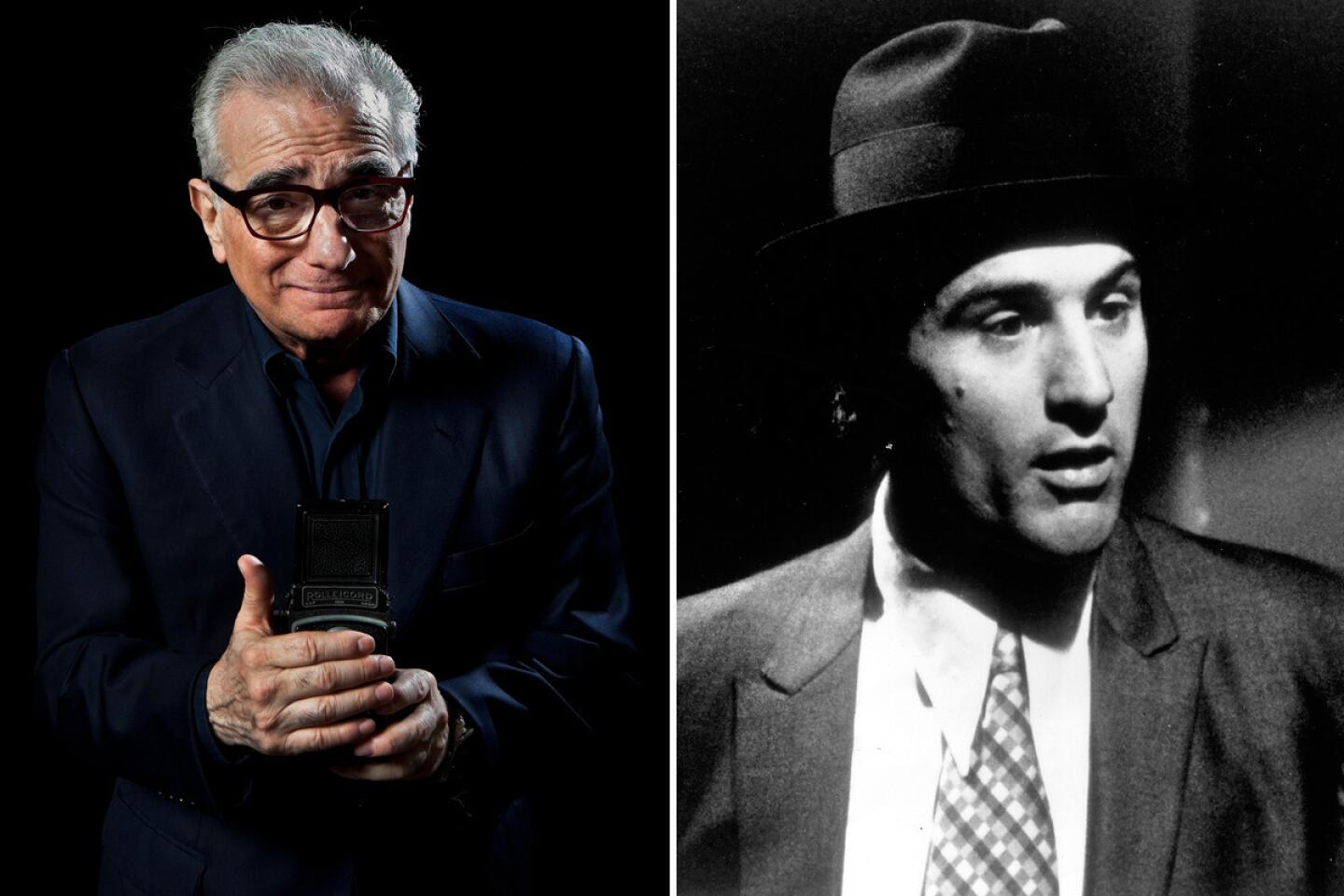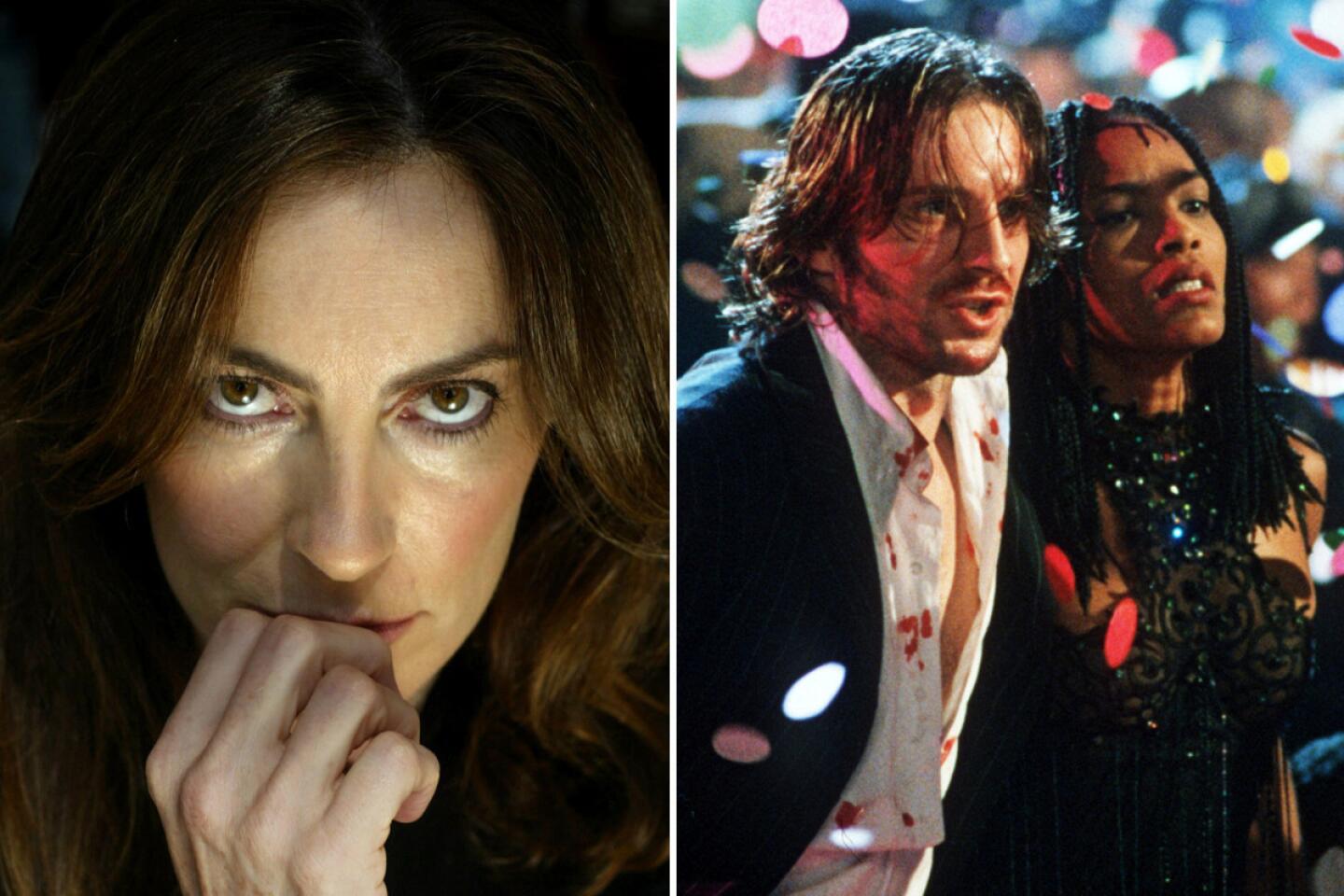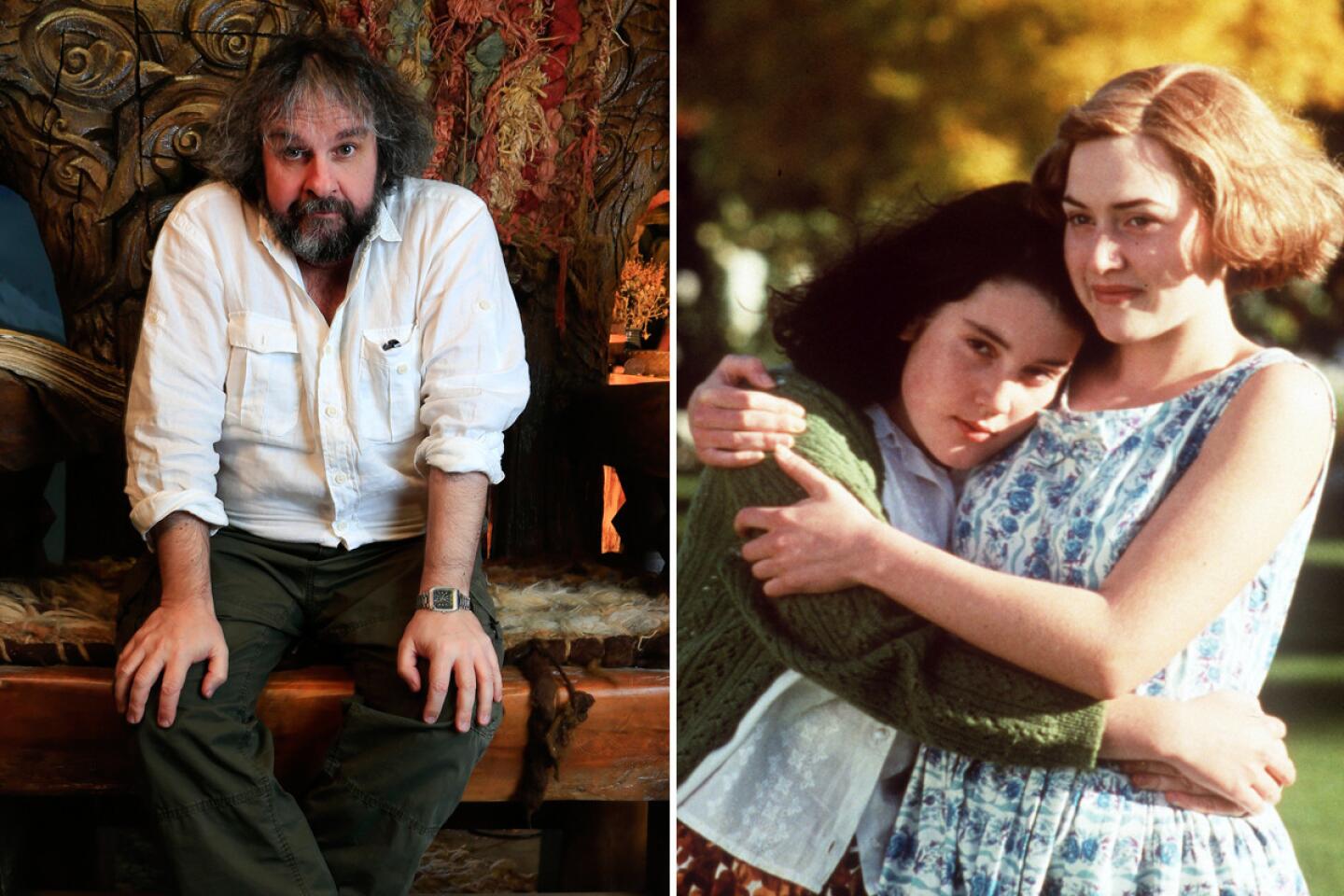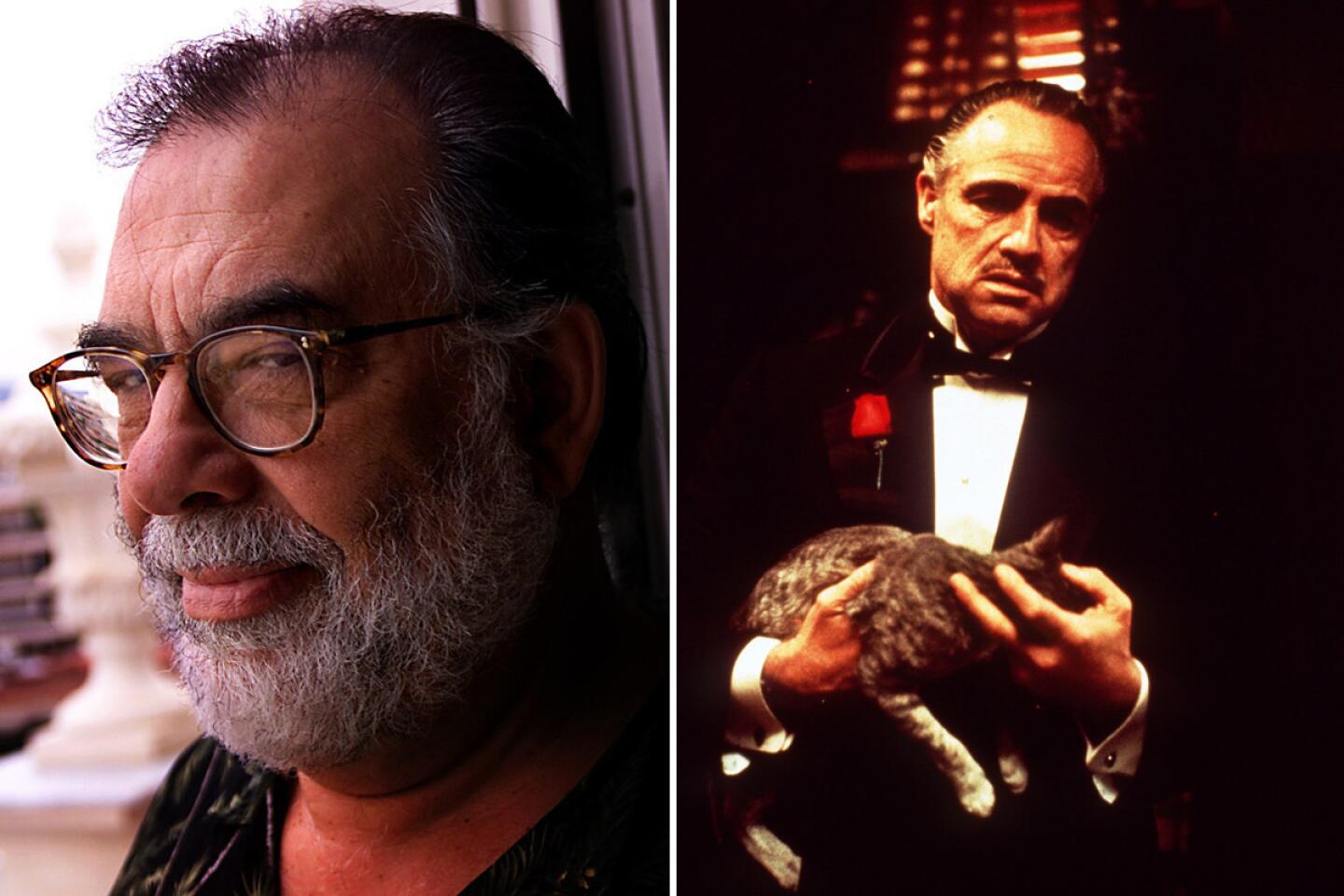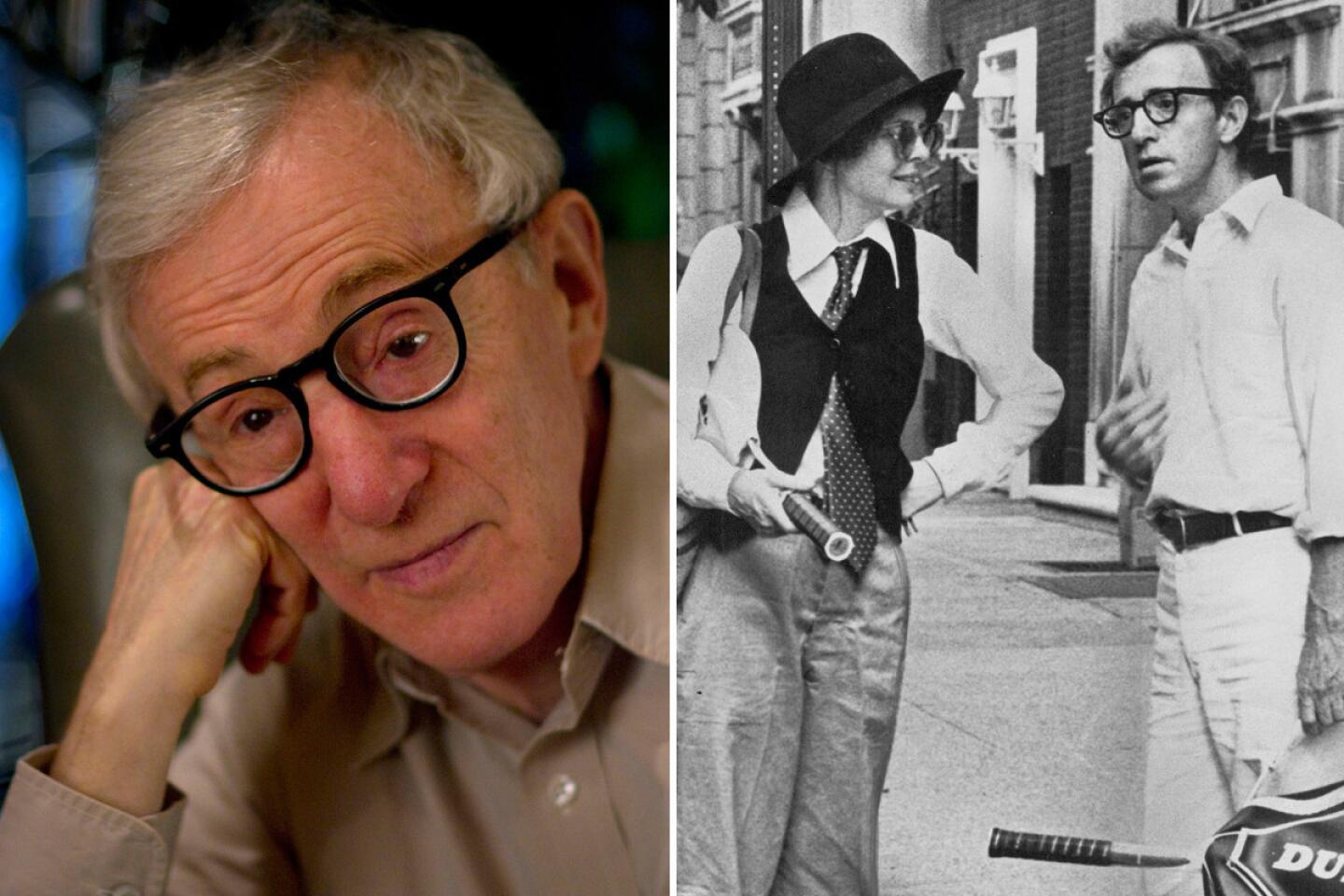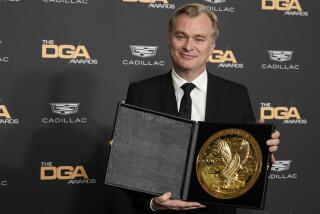Twelve directors and the movies that made them
Directorial acclaim never comes easy. When it hits, though, the results can be significant not only for the helmer but for cinema itself. We take a look back at the films that propelled some of today’s most celebrated directors to prominence.
Steven Spielberg: The slew of television shows and short films directed by Ohio native Steven Spielberg was just a preview of things to come from a man who has become perhaps the most commercially successful director of all time. His first major directorial effort, “The Sugarland Express” (1974), an adventure comedy featuring Goldie Hawn, amassed enough attention to make Spielberg one to watch. But it was his mega-hit “Jaws” (1975) that garnered him international acclaim.
The film cast Roy Scheider in the lead, with Robert Shaw and Richard Dreyfuss costarring. Noted composer John Williams served up the film’s score, which later as judged the sixth greatest score of all time, according to the American Film Institute. “Jaws” also helped kick off the tradition of the summer blockbuster -- the movie was the first to break $100 million at the U.S. box office and netted more than $470 million worldwide.
Which isn’t to say the film’s production was simple. Nicknamed “Flaws” by disgruntled crew members, the film engendered a painfully slow production process. But the troubled development led to decisions that proved wise in retrospect -- the movie’s main threat, the shark suggested by the title, remained largely hidden because of logistical issues. But that proved to heighten the suspense; as Spielberg put it, the decision offered more of a Hitchcock feel, making it a “the-less-you-see-the-more-you-get thriller.”
BEST MOVIES OF 2013: Turan | Sharkey | Olsen
James Cameron: The sci-fi thriller “The Terminator” (1984), starring Arnold Schwarzenegger as a robot from the future, was only Cameron’s third film, but it proved to be a sensation. Cameron had been preparing himself for a career in visual effects, he said, by learning mold-making and sculpting while working for B-movie king Roger Corman. “The Terminator” showcased those skills and offered just a taste of what Cameron would continue to offer cinema, and what would become his specialty. “Terminator” springboarded him to become the director behind two of the highest grossing films ever -- his 1997 romance epic “Titanic” became the first film to earn more than $2.1 billion worldwide at the box office and his 2009 sci-fi adventure “Avatar” proved equally triumphant by taking in more than $2.6 billion worldwide.
Martin Scorsese: As a young boy Martin Scorsese had asthma, which prevented him from playing sports and many other activities with other children. So his parents and older brother would take him to movie theaters, where he developed his passion for cinema. Scorsese later attended film school in New York and made a handful of award-winning shorts, and even directed his first feature film there. Soon he was introduced to the “movie brats” of the 1970s, including Francis Ford Coppola, George Lucas and Steven Spielberg, eventually directing the Roger Corman-produced Depression-era drama “Boxcar Bertha.” Tutelage from Corman helped Scorsese realize that he could create entertaining films with little money and time, and encouragement from actor-director John Cassavetes -- who believed Scorsese’s talent didn’t fully shine through in “Boxcar Bertha” -- pushed Scorsese to make films he was more passionate about.
This led to “Mean Streets” (1973), which gave him his breakthrough as a director. The crime drama cemented Scorsese’s style, which includes sharp edits and bold musical choices, along with recurring themes of guilt, redemption, violence and machismo. The film also served as part of a group of unorthodox -- and landmark -- ‘70s pictures made by an emerging class of American directors. Scorsese would revisit the tone of “Mean Streets” in future work, including “Raging Bull” (1980), “Goodfellas” (1990) and “Gangs of New York” (2002).
Quentin Tarantino: When people ask Quentin Tarantino whether he went to film school, he often says he went to films instead. A stint as an employee at a video rental store also helped, enabling the pastiche of influences that he would incorporate into all his films. His signature style was evident in his debut, the heist thriller “Reservoir Dogs” (1992), which he wrote and directed and which played the Sundance Film Festival and immediately brought Tarantino critical acclaim. Tarantino was recruited to direct scripts he didn’t write but instead chose to stick to his own work and came back with the crime drama “Pulp Fiction” (1994), which premiered at the Cannes Film Festival and won the highest honor at the event. The film would later win a screenplay Oscar and net an additional six nominations, including best picture.
Kathryn Bigelow: Before Kathryn Bigelow became a director known for her striking imagery and heart-pounding sequences she was an artist who studied painting in San Francisco. It was a skill she took interest in thanks to her father, a frustrated cartoonist. Having won a scholarship to study film, Bigelow then moved to New York City and began directing shorts and features. Her early group of actions films -- “Blue Steel” (1990), “Point Break” (1991) and “Strange Days” (1995) -- made an impression, though it was her war-film phase, with “Hurt Locker” (2009) and “Zero Dark Thirty” (2012) that cemented her reputation, with the latter winning the Oscar for best picture.
PHOTOS: Box office top 10 of 2013 | Biggest flops of 2013
Peter Jackson: As a young man, New Zealand native Peter Jackson used his days off from work as a photographic lithographer to write and direct his first feature film, “Bad Taste” (1987), a comedy about flesh-eating aliens. The film featured his friends as the actors, and took four years to complete. With a little encouragement, Jackson submitted “Bad Taste” to the Cannes Film Festival and took home several prizes. Following the success of the film -- now a cult classic in its own right -- Jackson took a more serious turn with “Heavenly Creatures” (1994), based on a famous New Zealand matricide case from the 1950s. The success of the disturbing film attracted the attention of American company Miramax, and elevated Jackson to mainstream prominence.
Christopher Nolan: A master of unconventional storytelling and psychological depth, Christopher Nolan has proved that challenging narratives can work, and work well. Indeed, Nolan is credited with bridging the gap between art house and blockbuster films. He pictures a story as a maze, he said, and its characters shouldn’t be watched from above that maze, but rather in the moment as they make each new turn.
Nolan took that philosophy and infused it in his first feature, “Following” (1998). The small-budget noir thriller about an isolated writer obsessed with following strangers caught the attention of the film world, which elevated Nolan’s status as a director and helped him finance his next film “Memento” (2001). This indie thriller, told in reverse order about an amnesiac man who takes copious notes and relies on Polaroids to hunt for the man he thinks killed his wife, generated buzz when it premiered at the Venice Film Festival. After nearly a year on the festival circuit, it eventually came out in the U.S. to art house success and media acclaim. The film thrust Nolan into the limelight and propelled him to the Oscars, where he earned nominations for editing and screenplay.
Clint Eastwood: Few can leap from actor to director like Eastwood did. The San Francisco native with signature rugged looks launched his career as an actor on the CBS western series “Rawhide” (1959); he was discovered walking down a hallway in the CBS studios. Eastwood later gained worldwide popularity when he starred in a trio of Italian “spaghetti Westerns.” Upon returning to America, a lull in his career gave him time to begin directing. Eastwood’s 1988 biopic on jazz musician Charlie “Bird” Parker (played by Forest Whitaker) established him as a rising director, despite the fact that the film was a commercial failure; he would then follow it with “Unforgiven” (1992), which won an Oscar for best picture as well as director, and a nod for lead actor. Eastwood is known for his efficient directing style as well as his ability to stick to a film’s budget and filming time, stemming, he has said, from frustrating times spent on set as an actor.
Francis Ford Coppola: For Coppola it was his screenwriting talent that first grabbed the film industry’s attention. His work on the World War II biopic “Patton” (1970) earned him an Oscar (with Edmund H. North) for original screenplay. Soon after, Coppola struck gold with the enormously successful “The Godfather” (1972), which brought him instant international recognition as a director. It was around the same time that he became part of a 1970s class of directors, including Martin Scorsese, George Lucas and Steven Spielberg. Coppola, an Italian American, initially refused an offer from Paramount Pictures to direct the film, fearing the story would glorify the Mafia and reflect badly on his Italian heritage. He was convinced when he realized he could make the film a larger metaphor for American capitalism. “The Godfather” was such a success that it won a best picture Oscar, transformed the gangster genre and offered an abundance of profound street quotes.
Woody Allen: Allen once tried his hand at stand-up comedy and television writing; he earned an Emmy nom for his work on Sid Caesar’s “Your Show of Shows,” but he quickly grew bored. So he poured his energy into writing his own plays and movies -- often appearing in them. In 1977 the romantic comedy “Annie Hall” proved to be Allen’s breakthrough as a director. With actress Diane Keaton as his lead -- and eventually as his lover -- Allen was credited with what would become his strong suit: creating strong female leads. “Annie Hall” also set the standard for the modern romantic comedy, and established Allen’s style of tart intellectual digressions. The film also started a fashion wave of sorts -- ties, oxfords and bowler hats all became popular thanks to Keaton’s style in the film. Allen’s own attire wouldn’t be in display -- he didn’t turn up for the Oscars where “Annie Hall” won four prizes, the start of a long career avoiding award ceremonies.
PHOTOS: Stars who turned down, or were turned down for, ultimately famous roles
Steven Soderbergh: After Soderbergh graduated from high school in Baton Rouge, La., he moved to Hollywood, where he became a freelance film editor, and even, the story goes, a game-show scorer and cue-card holder. A concert film for the rock band Yes earned Soderbergh a Grammy nomination. It wasn’t enough to keep him in Tinseltown, though. Soderbergh returned home, where he would conceive the film that would propel him to prominence. The 26-year-old Soderbergh wrote the script for “sex, lies and videotape” (1989), his dark story of sex and fidelity, in eight days; the film went on to win the highest honor at the Cannes Film Festival, and made Soderbergh the youngest director to win the festival’s top award. (It also helped that celebrated movie critic Roger Ebert called Soderbergh the “poster boy of the Sundance generation.”) The film was influential in helping kick start the modern independent film movement and marked the beginning of an eclectic career for Soderbergh.
Alfred Hitchcock: And last but not least ... the master. Hitchcock is one of the all-time greats, thanks to his twisty plots, masterful shots and innovative editing techniques. Hitchcock’s characters are often the wrongly accused, a reflection of a childhood spent living with many fears.
In his early 20s, Hitchcock entered the film industry as a title card designer for silent films. He worked his way up to the directors’ chair, and became Britain’s top director with masterpieces like “The Man Who Knew Too Much” (1934), “The 39 Steps” (1935) and “The Lady Vanishes” (1938). Hitchcock then came to Hollywood and made his American film debut with “Rebecca” (1940) -- a psychological melodrama about a tortured bride -- winning him an Oscar for best picture and setting him on a path of directorial superstardom.
ALSO:
Quentin Tarantino’s Gawker suit dismissed, case not dead
Barbie coming to the big screen in live-action comedy for Sony
Steven Spielberg eyes Tom Hanks Cold War thriller as frenzy continues
More to Read
Only good movies
Get the Indie Focus newsletter, Mark Olsen's weekly guide to the world of cinema.
You may occasionally receive promotional content from the Los Angeles Times.



